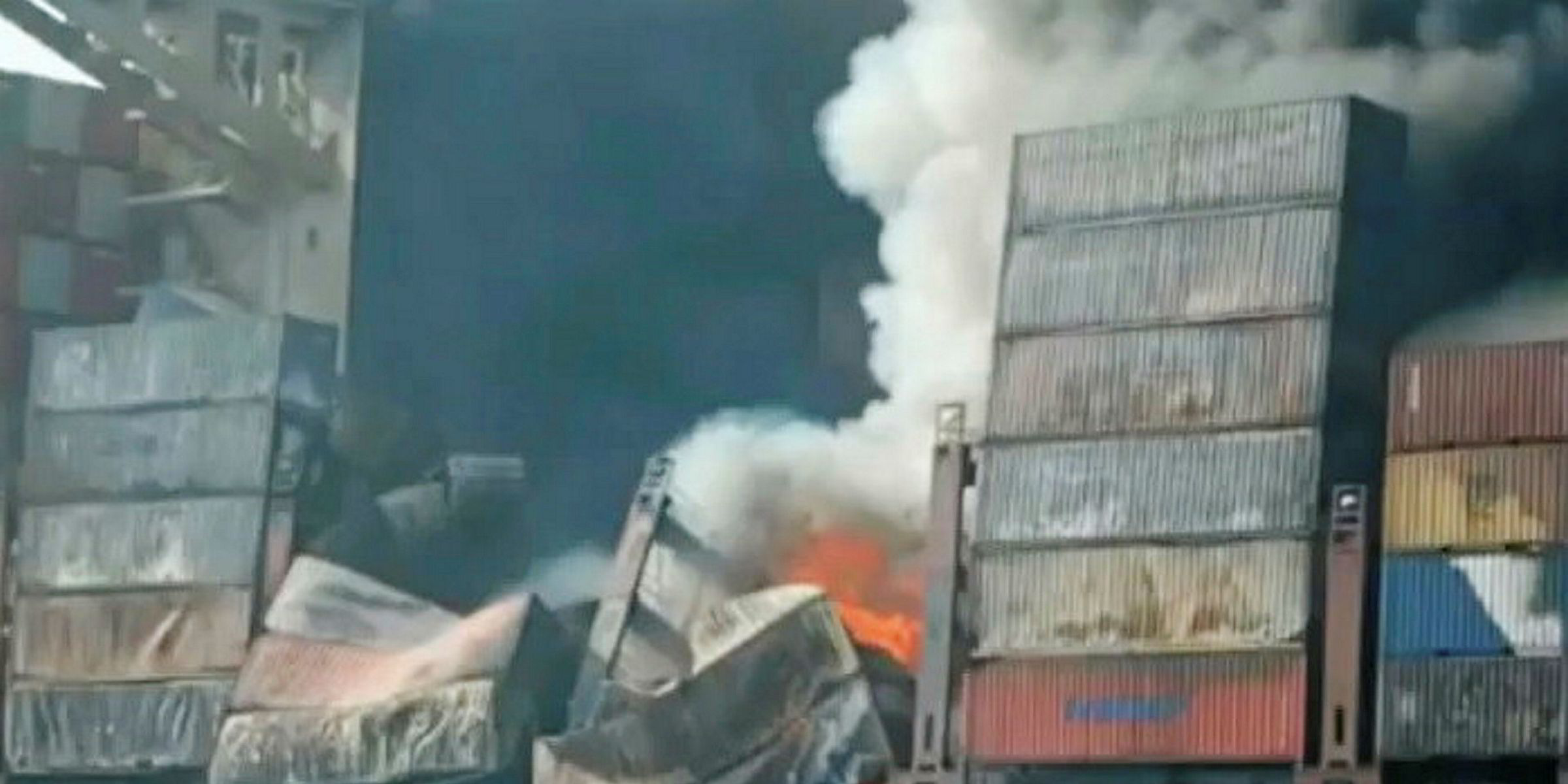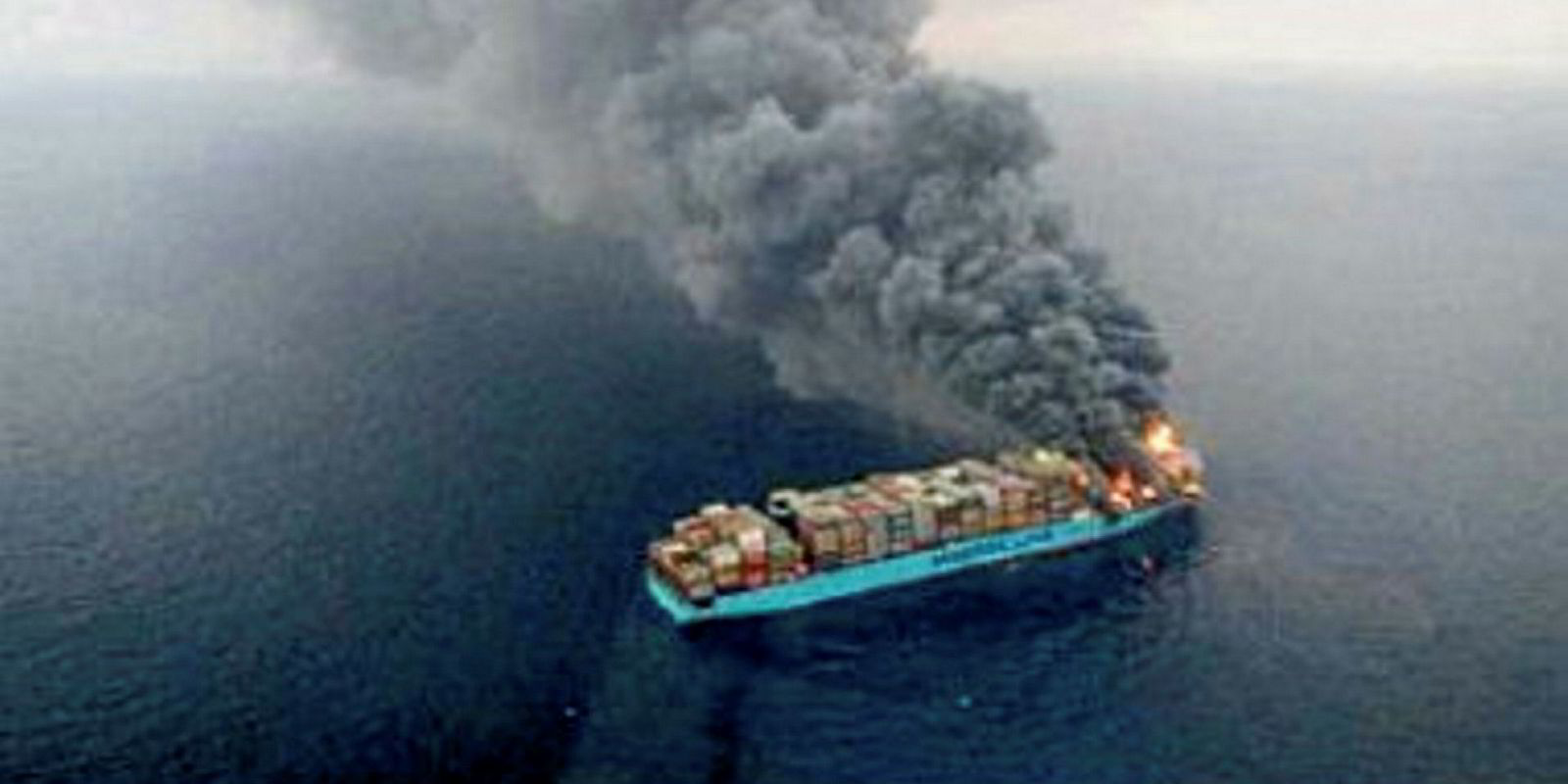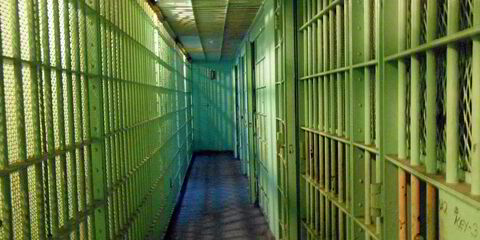Maersk Line has stopped loading dangerous goods in areas close to the accommodation and engine casing units on its boxships as it carries out tests to determine the cause of the Maersk Honam blaze.
The fire claimed the lives of three crew members, with another still missing.
Maersk insists there is no evidence the fire some 340 miles off India's Lakshadweep archipelago was caused by dangerous goods and said all cargoes were loaded in line with the safety measures outlined in the International Maritime Dangerous Goods Code.
But in a statement to TradeWinds, Maersk said: “Until an investigation has been completed and the cause of the fire is known, we have decided to take precautionary measures by restricting stowage of DG [dangerous goods] in the immediate vicinity of the accommodation and engine casing.”
Maersk said there were no “declared” cargoes of calcium hypochlorite — a cargo often associated with containership fires — loaded onto the 15,262-teu Maersk Honam (built 2017).
However, just days before the fire, the ship’s protection and indemnity insurer, the Standard Club, issued a loss prevention note warning of the dangers of wrongly declared cargoes of calcium hypochlorite suggesting that misdeclaration is still a major safety concern for the liner industry.
Maersk said it only takes calcium hypochlorite from one shipper and regularly vets shippers of dangerous goods.
But it is examining similar cargoes from shippers which had been loaded in the area where the Maersk Honam fire started to determine whether the contents of the containers were as declared.
“To get a full overview of the cargo composition in the cargo hold where the fire originated, we are inspecting a limited amount of containers which share a shipper or forwarder and commodity combination that is matching containers in this specific cargo hold,” Maersk said.
“In total, we expect to complete around such 150 inspections. We have informed our customers and asked for their cooperation in regard to these short-term measures.”
International Union of Marine Insurers secretary general Lars Lange said that containership fires are a major concern for the marine insurance industry.
Speaking to the International Salvage Union (ISU) associate meeting in London this week, he produced figures showing there had been 16 separate fires on boxships between July 2015 and April 2017.
“We have seen hundreds of incidents in the last few years,” he said. “It is happening more or less every month.”
Speaking of containership fires, he said safety measures are still inadequate. “Fire detection in holds is still a massive problem and CO2 [fire extinguishing systems] in holds are not effective enough,” he told the ISU.
He said he understood there had been two attempts to extinguish the Maersk Honam fire using CO2, both of which failed.
The main cause of containership fires, he suggested, is misdeclaration.
The firefighting operation headed by salvors Ardent and Smit Salvage continued as TradeWinds went to press. Some suggest the ship may eventually be a constructive total loss.
The hull is said to be insured for about $160m including increased-value cover. Maersk writes hull insurance in its captive Maersk Insurance but fully reinsures the risk. Richards Hogg Lindley has been appointed as average adjusters and general average has been declared.




